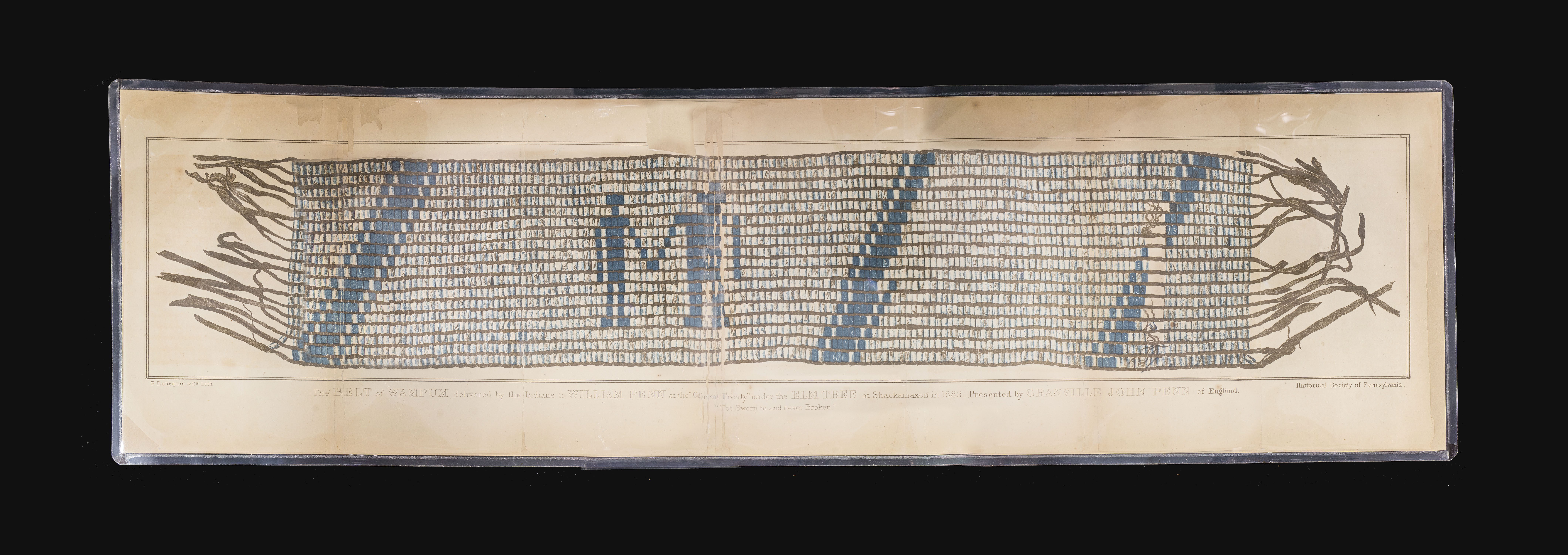F. Bourquin & Co. The Belt of Wampum delivered by the Indians to William Penn at the ‘Great Treaty’ under the Elm Tree at Shackamaxon in 1682. n.d.

The Wampum Belt depicted in this print is the only physical evidence that can be linked back to the Treaty. The image of the two figures holding hands has become a well-recognized symbol in Philadelphia, and is featured on a statue outside of the Penn Treaty Park in Fishtown. The design of the belt has been interpreted in various ways over the years: 19th century white American scholars assumed that the larger figure was a European in a hat, a notion that has carried over into modern day scholarship, but more recently Indigenous chiefs who study Wampum Belts have said that the larger figure could just as easily be a Lenape chief in headdress. The difference in scale between figures implies a power imbalance, as the eye is drawn to the larger silhouette first, and in that way the larger figure holds more weight for the viewer.
Whatever the original intention of the Lenape weaver, these different analyses of the belt highlight the way white American scholars historically perceive Indigenous people as “inferior,” and use their version of the narrative to impress that perception onto others, without asking any Indigenous scholars or artists for their interpretation of a work that originated from their culture.